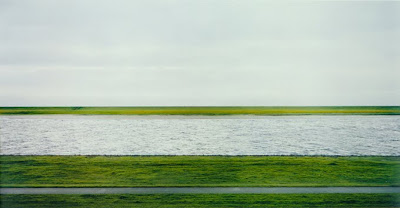

Andreas Gursky studied at several schools in Germany before becoming a student of the Bechers. His work has progressed from his early work showing family outings to his more famous work of large prints of factories, buildings, and interiors. The sheer amount of information that his photographs present continues to amaze me every time I look at them. So many of his images are incredibly static despite the obvious motions that the subjects are carrying out. His concepts are relatively straight forward and rely heavily on the aesthetic beauty of his pieces. Not to say that they are oversimplified, but you do not have to spend a life time with them to be able to have a solid base of understanding about them. Gursky is the perfect extension of his teachers because he not only caries on their traditions and style but he has put a completely new spin in what was given to him.


Candida Höfer is another great example of a Becher taught artist. The main difference between her and Gursky is the dramatic absence of people. Her photographs are set ups that are meticulously arranged and usually would be full of human activity. The absence of life raises the question of what purposes do these spaces really fulfill? Höfer is a perfect example of an artist that I did not have prior knowledge of but am still indirectly influenced by. Höfer and the others that studied under the Bechers have established a style that is so widespread and has affected so many photographers that they influnce completely indirectly.
No comments:
Post a Comment